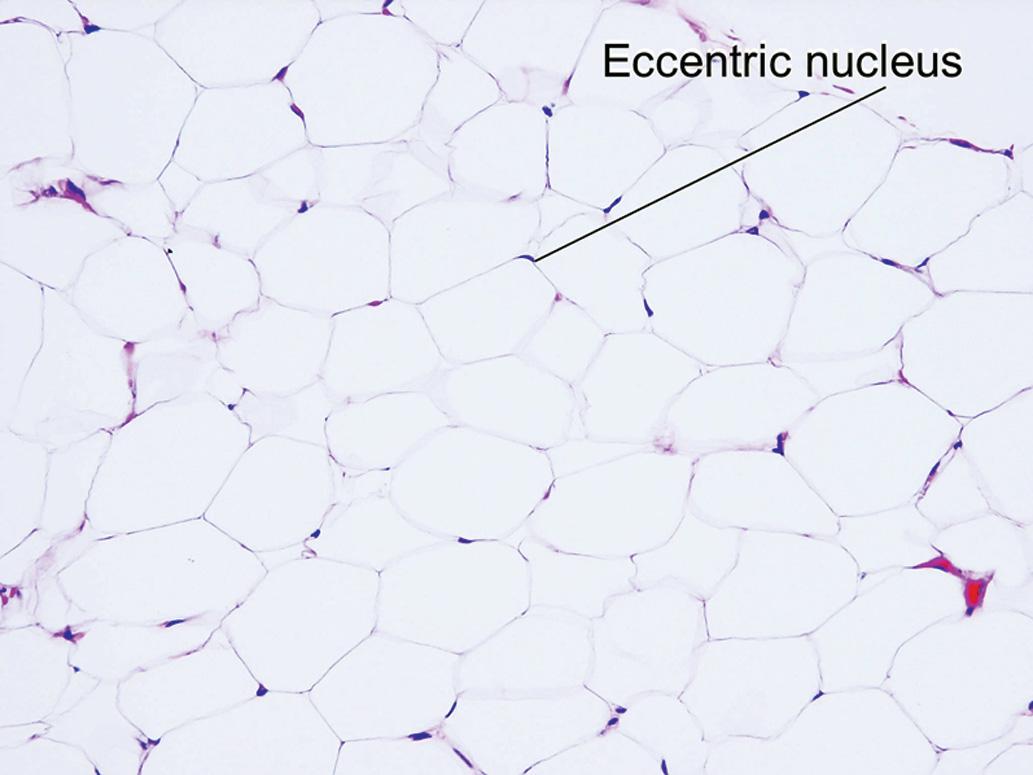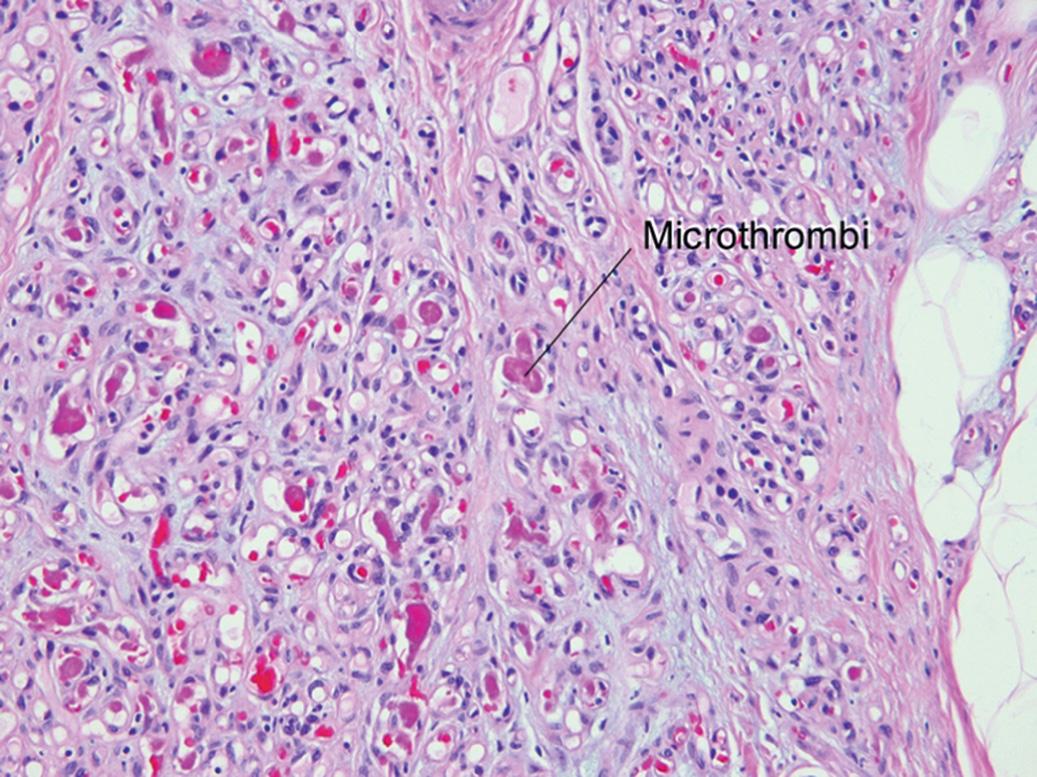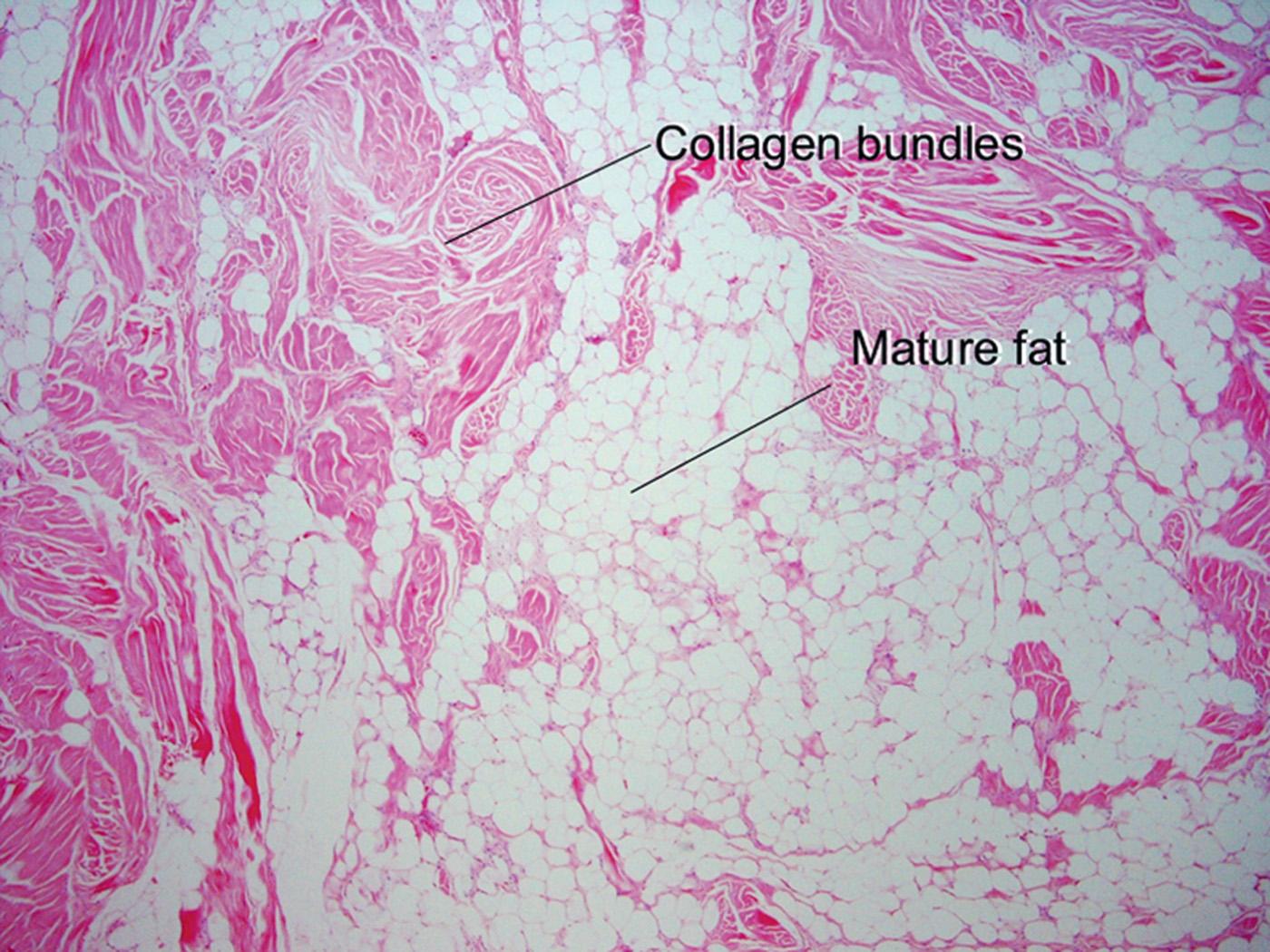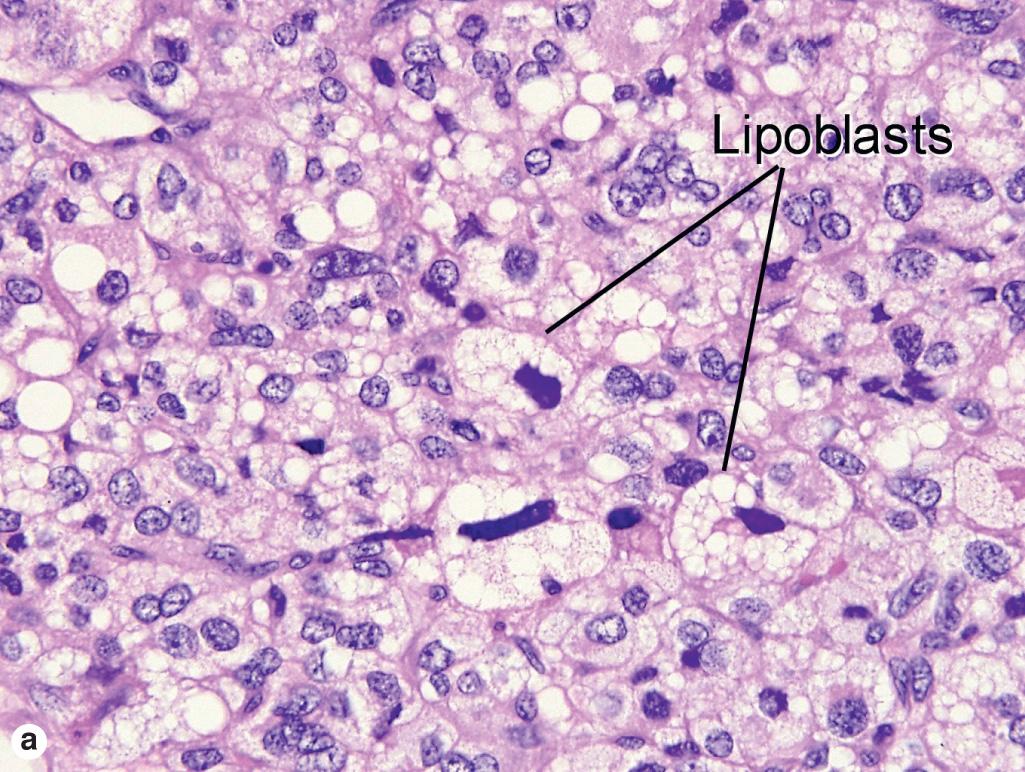Physical Address
304 North Cardinal St.
Dorchester Center, MA 02124
Well-circumscribed tumor with a thin capsule
Mature lipocytes
Inconspicuous septae
Lipomas typically present as asymptomatic, mobile, soft nodules in the deep soft tissue or subcutis. Histologically, they are thinly encapsulated tumors composed of sheets of mature adipocytes that are indistinguishable from the fat cells in the subcutaneous tissue. Each adipocyte has a single vacuole and an eccentric nucleus. The thin fibrous septa, which contain sparse blood vessels, are delicate and inconspicuous. Intramuscular lipomas, commonly of the forehead, consist of mature fat cells that displace muscle, splaying the fibers.
There are several rare syndromes in which multiple lipomas occur. Hundreds of slow-growing subcutaneous and deep or visceral lipomas develop in early adulthood in the autosomal-dominant condition familial multiple lipomatosis. Benign symmetric lipomatosis (Madelung disease) has a predilection for middle-aged men with a propensity to develop multiple lesions, especially in the region of the neck in a “horse-collar” distribution. Tender, circumscribed or diffuse fatty deposits of the lower legs, abdomen, and buttocks in obese patients exemplify adiposis dolorosa (Dercum disease), sometimes associated with weakness and mental disturbances. Lipomas may also be a component of Gardner syndrome, Bannayan–Zonana syndrome, Cowden syndrome, and Proteus syndrome.


Lipoma with proliferation of capillary-sized blood vessels
Erythrocytes and scattered fibrin microthrombi are commonly present in the lumens
Clinically, angiolipoma are often tender to palpation. They commonly occur in women, are multifocal, and have a predilection for the forearm.
The differential diagnosis of painful tumors can be remembered by the mnemonic “BANGLE”:
B lue rubber bleb nevus
A ngiolipoma
N euroma
G lomus tumor
L eiomyoma
E ccrine spiradenoma


Well-circumscribed tumor of mature fat with interspersed zones of bland spindle cells and variable amounts of collagen
In young lesions, the spindle cell areas are myxoid, with many mast cells
No lipoblasts or mitotic figures
CD34+ spindle cells
Ropey collagen bundles
The most common presentation is a solitary lesion at the base of the neck, shoulder, or upper back in an older man. These lesions are generally firmer and more fixed to surrounding tissue than the usual lipoma.
When spindle cell and myxoid components predominate, there may be confusion with neural or fibroblastic proliferations, especially diffuse neurofibroma.


Well-circumscribed tumor of mature lipocytes containing large bundles of mature collagen

Well-circumscribed tumor of lipocytes with multinucleate floret cells containing overlapping nuclei arranged at the periphery like the petals of a flower
Hyperchromatic nuclei may be present
Myxoid areas and ropey collagen bundles may be present, as in spindle cell lipoma
Pleomorphic lipomas have a firm consistency and similar distribution to spindle cell lipomas on the neck and shoulder girdle of older men.
The sharp circumscription, superficial location, floret cells, paucity of mitotic activity, and absence of lipoblasts distinguish pleomorphic lipoma from pleomorphic liposarcoma. Lipoblasts are immature fat cells that may have an eccentric nucleus (signet-ring lipoblasts) or have a central scalloped nucleus indented by lipid vacuoles (mulberry lipoblasts). Liposarcoma typically arises in deep soft tissue, especially the retroperitoneum, but may involve the skin. Liposarcomas demonstrate an arborizing pattern of blood vessels that resembles “chicken wire.”

Represents well-differentiated liposarcoma
Lipocytes vary in size
Atypia noted near septae
Positive for MDM2 and CDK4 by immunohistochemistry (IHC) or fluorescence in situ hybridization (FISH)

Lipocytes vary in size
Mulberry or signet-ring lipoblasts
Arborizing (chicken-wire) vascular pattern

Become a Clinical Tree membership for Full access and enjoy Unlimited articles
If you are a member. Log in here